Outer Space & Universe
Outer Space & Universe
Space, also known as outer space, is the near-vacuum between celestial bodies. It is where everything (all of the planets, stars, galaxies and other objects) is found.
On Earth, space begins at the Kármán line (100 km above sea level). This is where Earth's atmosphere is said to stop and outer space begins. This is not a firm boundary but is a convention used by scientists and diplomats.
Items in space are free to move back and forth; up and down; and left and right. These three dimensions are what make 3D space. Items also move forward through time, which is sometimes called the fourth dimension.
The majority of space contains very little matter and so most of it is a vacuum. Scientists do not know how big space is but we do know that space is extremely big, and is always expanding.
According to the big bang theory, all matter and energy in the Universe was compressed into a very small space. Then it exploded and started expanding. Space is still growing in size today; this means the distance from one galaxy to distant galaxies is getting longer.
Gravity is the force that keeps the Moon in orbit around the Earth and the planets in orbit around the Sun. Gravity can stretch and bend space similar to how a heavy ball placed on a stretched sheet of rubber will cause the rubber to stretch. The scientist who discovered that space can bend is named Albert Einstein. How gravity bends space is part of his theory of general relativity.
Astronauts, Cosmonauts, Taikonauts and Spationauts
An astronaut is any person who is trained by NASA to travel and perform tasks in space. Although the space traveler may not necessarily be a United States citizen, each astronaut does go through a rigorous training regiment by the National Aeronautics and Space Administration. Other space travelers go by other names then astronaut depending on their country of origin.
In the United States, astronaut is derived from the Greek words ástron (star) and nautis (sailor). While, in Russia, a space traveler goes by the name космонавт (English: cosmonaut), which is derived from the Greek words kosmos (universe) and nautis (sailor). Westerners call a space traveler from China a taikonaut, based on the 1998 writings of Chiew Lee Yik and Chen Lan where the term tàikōng (great emptiness), Chinese for “space”. In China, the term yuháng yuán (universe navigator) is used for space traveler.
Only the United States of America (United States), Russia (earlier, the Union of Soviet Socialist Republics), and the People’s Republic of China (China) have sent manned spacecraft into space. Other countries have assisted these countries by sending their own space travelers on space missions. For instance, a French space traveler is called a spationaut (from the French word spationaute), which is derived from the Latin spatium (space) and Greek nautis (sailor). (plural in Greek nautes = sailors)
-
00:50

Nano Panels Beam Heat Into Space | Video
Added 679 Views / 0 LikesSolar radiation, trapped by our atmosphere, keeps Earth warm. But if human activity is making it too warm, Stanford scientists have developed a panel that can return heat to space. Is this a tool for future geo-engineering?
-
04:30
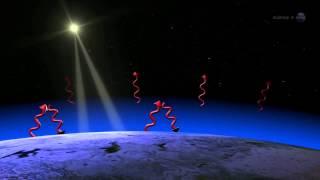
Why Is Mars A Desert Wasteland? NASA MAVEN Mission Will Investigate | Video
Added 774 Views / 0 LikesSet to launch on Nov 18th, 2013, the orbiter seek to rewind the planet's geologic history back to the wet, warm epoch that might have spawned life. MAVEN's instruments may help scientists understand why the planet lost much of its atmosphere.
-
02:33
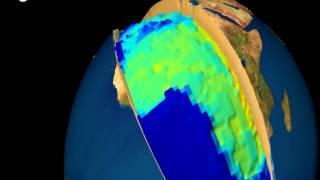
GOCE Satellite - Science Performed Before Its Destruction | Video
Added 757 Views / 0 LikesESA's Gravity field and steady-state Ocean Circulation Explorer (GOCE) mapped the Earth's gravity with precision. Find out about the science it performed in this end of mission video.
-
06:10
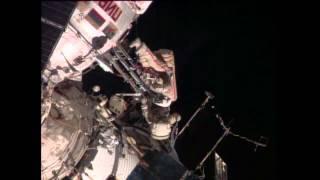
'Olympic Torch' Taken Out On Spacewalk | Video
Added 665 Views / 0 LikesRussian Cosmonauts Oleg Kotov and Sergey Ryazanskiy took an unlit torch that will be used at the 2014 Winter Olympics in Sochi, Russia on a spacewalk. They were installing and replacing experiments and hardware for the ISS as well.
-
01:11
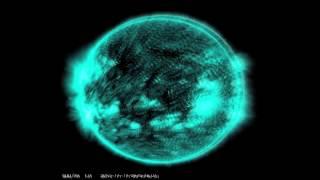
Sun Crackling With X and M Class Flares | Video
Added 590 Views / 0 LikesSunspot AR1890 has erupted with another X class flare on November 10th, 2013. Also, a Sunspot that just recently begun its Earth-facing journey (AR1895) has made its presence know with an M2 flare on Nov. 11th.
-
00:53

Auroras + Wilderness Teepee = Stunning Show in Sweden | Video
Added 772 Views / 0 LikesOn 9 November 2013, powerful northern lights danced over Abisko National Park in Sweden. Chad Blakley (lightsoverlapland.com) captured the show and compiled this time-lapse.
-
01:44
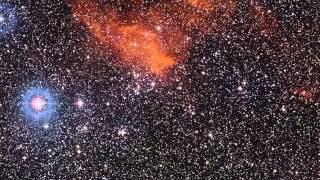
Hot Young Stars Sculpt Beautiful Stellar Clouds | Video
Added 800 Views / 0 LikesThese hot young stars, which are much heavier and will have short lives, have painted the curious and whimsical clouds of gas and dust in this photo of star cluster NGC 3572. Credit: ESO
-
10:18
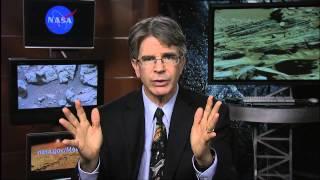
Why Keep Sending Probes To Mars? NASA GSFC Chief Scientist Explains | Video
Added 789 Views / 0 LikesSPACE.com's @MiriKramer speaks with Dr. James Garvin about key unsolved questions and how NASA's MAVEN will search the Martian atmosphere for answers.
-
02:34

Curiosity Drives Itself With Autonav Tech | Video
Added 625 Views / 0 LikesThe Mars Science Laboratory's navigation technology allows controllers to simply determine a destination and let the rover figure out how to drive there. The software searches for obstacles and holes, then safely avoids them.
-
00:16
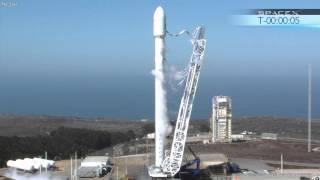
SpaceX Test Fires The Next Generation Falcon 9 | Video
Added 801 Views / 0 LikesThe private space company test fired the engines on upgraded Falcon 9 (v.1.1) on September 19th, 2013. The target launch window for the rocket opens on September 29th.
-
01:22
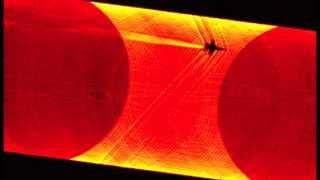
Jet's Supersonic Shockwaves Snapped While Eclipsing Sun | Video
Added 767 Views / 0 LikesResearchers at NASA's Dryden Flight Research Center have photographed F-15 and F/A 18 aircraft pass between cameras and the Sun. Imagery of interrupted air flow density around the aircraft can help minimize sonic booms and aircraft stress.
-
01:04

Galaxy Cluster's 'Colossal Arms' Revealed In X-Rays | Video
Added 864 Views / 0 LikesThe Coma Cluster of galaxies' hot gas arms, spanning at least a 1/2 million light years, have been unveiled by combining images from the Chandra and XMM-Newton x-ray Observatories. They're a byproduct of smaller galaxies merging with the cluster.
-
01:04
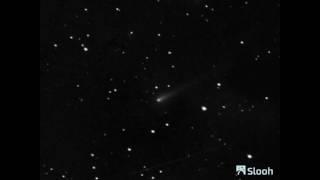
Comet ISON Has Apparent Fling With Asteroid Eros | Video
Added 785 Views / 0 LikesSlooh.com's Canary Islands Observatory captured asteroid 433 Eros seeming to fly with Comet ISON on September 24th, 2013. This 2nd largest near-Earth asteroid -- which has been visited by the NEAR probe -- is traveling faster, along a different orb
-
04:05
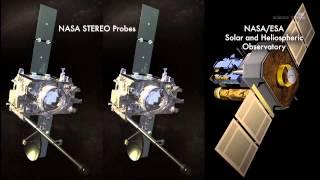
Comet ISON Now In Amateur Astronomers' Range | Video
Added 788 Views / 0 LikesAs the comet approaches its date with the Sun (Nov. 28th, 2013), it brightness is growing in magnitude. This has opened the door to backyard astronomers with smaller telescopes to glimpse the possible 'Comet of the Century'.
-
01:52

NASA's Grand Asteroid Challenge Scours Maker Faire '13 For Ideas | Video
Added 691 Views / 0 LikesNASA's public outreach program is looking for innovative ideas of locating hidden asteroids that lurk around our world. SPACE.com caught up with NASA's Andrew Filo at their Maker Faire booth.
-
01:31

Cat's Paw Nebula's Hidden Light Exposed By Powerful New Camera | Video
Added 735 Views / 0 LikesA new camera named ArTeMIS was installed on the Atacama Pathfinder Experiment (APEX) telescope in Chile. It returns imagery in millimetre and submillimetre wavelengths and can expose light from dense clouds of interstellar dust grains. Read more here: htt
-
02:13

Galaxy 200 Million Times Heavier Than Our Sun Spotted | Video
Added 743 Views / 0 LikesThe densest galaxy known may have been found by combining data from NASA's Hubble and Chandra X-ray space observatories, plus several land-based telescopes. The galaxy, known as M60-UCD1 is about 54 million light years from our own.
-
03:07

NASA Using the Moon to Understand the Sun: ARTEMIS Extended Mission | Video
Added 729 Views / 0 LikesAs the Moon passes through Earth's magnetic field, two lunar-orbiting spacecraft look for turbulence, particle acceleration, and magnetic reconnection. These phenomena control how the solar wind interacts with Earth's magnetosphere.
-
03:54

Climate Change Impact: NASA's 21st Century Predictions | Video
Added 714 Views / 0 LikesAccording to models, temps and precip. will change dramatically over the next 87 years, with amounts varying per location. Worldwide land area temperatures are predicted to increase, along with areas of heavier and decreased precipitation.
-
00:54
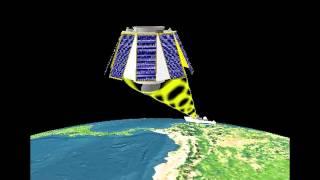
Interplanetary Internet - New Satellite To Move Large Data Files | Orbit Animation
Added 808 Views / 0 LikesA new hybrid small satellite called CASSIOPE is scheduled to launch aboard a SpaceX rocket in 2013. It is carrying a payload named Cascade, whose purpose is to move high volume data anywhere in the world.
